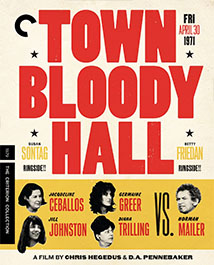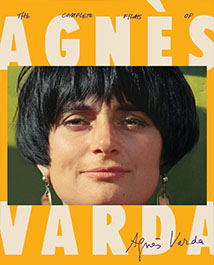
Each month, Paste brings you a look at the best new selections from the Criterion Collection. Much beloved by casual fans and cinephiles alike, Criterion has for over three decades presented special editions of important classic and contemporary films. You can explore the complete collection here.
In the meantime, because chances are you may be looking for something, anything, to discover, find all of our Criterion picks here, check out some of our favorite new releases from August and, hey, since many of us have a lot more time on our hands, maybe sign up for Criterion’s Criterion Channel to stream many of the titles we talk about here.
The Comfort of Strangers Year: 1990
Year: 1990
Director: Paul Schrader
Stars: Christopher Walken, Helen Mirren, Rupert Everett, Natasha Richardson
Genre: Drama, Thriller
Runtime: 104 minutes
Paul Schrader’s 1990 psycho-sexual drama The Comfort of Strangers is structured around contradictions. Take Christopher Walken, for instance, as dapper man of means Robert, living large in Venice and playing benevolent host to vacationing couple Mary (Natasha Richardson) and Colin (Rupert Everett). Robert cuts a refined figure until he starts talking about his sire and his sire’s sire, tales of dear old Dad and Granddad’s macho brutality, and later socks Colin in the tummy for no other reason than, hell, why not? He also gets the lovers stinking drunk instead of feeding them, abandoning them to fall asleep under Venetian stars before recovering them the next morning and inviting them into his dazzling palazzo, where his sinister mindfuck games continue, assisted by his wife, Caroline (Helen Mirren). The set-up to Schrader’s plot drips with kink as much as it thrums with disgust. Contextualized in the year of its release, The Comfort of Strangers is a pervy, repulsive curio in Schrader’s career and a fundamental moment in Walken’s, the moment when he immortalized himself through the Continental on Saturday Night Live; contextualized now, it’s tragically relevant, a too-real portrait of one of the world’s greatest cities, empty of life, erased of nearly every trace of evidence that people actually inhabit the place. There’s no virus here, other than the virulent sadomasochism Robert and Caroline live by, but there is an indescribable loneliness that lingers long after the film ends. —Andy Crump
Toni Year: 1935
Year: 1935
Director: Jean Renoir
Stars: Charles Blavette, Celia Montelvan, Jenny Hélia, Max Dalban, Andrex
Genre: Drama
Runtime: 84 minutes
Perhaps tired of the artifice of popular cinema, yearning to create something that could feel real and tactile to the working class, Jean Renoir took his crew to a small town in provincial France in search of a story. What resulted was Toni, an intimate small-town drama in which the titular construction worker (Charles Blavette) falls in love with a Spanish immigrant named Josefa (Celia Montelvan), but patriarchal culture and archaic traditions keep them apart. Renoir used non-professional actors picked from the locals and all real locations—unheard of in studio pictures at the time—and applied a raw, quasi-docudrama style that liberated his camera in ways a studio shoot never could. Thus, he created a bona fide neorealist film nearly 10 years before the Italians introduced the style into the cultural zeitgeist.
Toni’s plot, based on a tragic true story told to Renoir by his police officer friend, might be straight melodrama through-and-through, but Renoir doesn’t shy away from inserting some taut criticism about the many societal forces that prevent Josefa from choosing her own path through life. Criterion’s clear and crisp HD restoration makes Toni look like it was shot yesterday, which gives the film’s themes some immediate relatability. The extras are plentiful, from an introduction by Renoir himself, to a commentary track that digs deep into the production. But the true gem in the disc is a feature-length TV documentary from 1967 that uses a fly-on-the-wall approach to follow Renoir as he talks about his formidable career with his trademark captivating charisma. —Oktay Ege Kozak
Town Bloody Hall Year: 1979
Year: 1979
Directors: Chris Hegedus, D.A. Pennebaker
Genre: Documentary
Runtime: 89 minutes
April 30, 1971: New York City’s Town Hall Theater. After a considerable backlash to pompous intellectual wordsmith Norman Mailer’s anti-women’s liberation essay called “The Prisoner of Sex,” Mailer agreed to a debate with four of the foremost feminists of the era: Jacqueline Ceballos, Germaine Greer, Jill Johnston and Diana Trilling. Expecting a heated two hours, to say the least, directors Chris Hegedus and D.A. Pennebaker captured the debate using an on-the-fly filmmaking style to accentuate the cultural and cerebral intensity of the event. They came up with Town Bloody Hall, a raw snapshot of American gender discourse during (yet another) time when the country was deeply divided along cultural lines.
It’s half-astounding, half-sobering to see how some archaic thinking, maintaining the patriarchal status quo, hasn’t really moved forward in the intervening 50 years. In the film, as soon as one of the feminist speakers begins talking, a man in the audience screams that feminists only care about 50 percent of society; today, he might be wearing an “All Lives Matter” shirt. From a front row view, we experience the moment Jill Johnson practically dry humps her girlfriend as a show of LGBTQ freedom of expression. The mic-hogging Mailer tries to come across as an objectivist, but is somewhat exposed as a wishy-washy attention-seeker. Hegedus and Pennebaker’s technical approach has no judgment either way. All they attempt to do is to have their cameras swallow as much of the heckler-filled proceedings as possible. The grainy HD restoration by Criterion does a great job of placing us within the audience, while establishing the distinct look of the period. There are lots of extras with early 2000s footage that show the participants looking back on the debate, commenting on what changed and, sadly, what has stayed the same. —Oktay Ege Kozak
The Complete Films of Agnès Varda Years: 1955-2019
Years: 1955-2019
Director: Agnès Varda
Long before social media compelled us to document every moment and excavate every corner of our lives, Agnès Varda relentlessly documented and excavated hers. The whole of Varda’s output—some 59 films, anywhere from six to 226 minutes long, a melange of caricatures and travelogues and odes and self-portraits (all self-portraits, really), some films pieces of other films, others mirrors of others, not to mention her countless pre-film introductions of post-film appendices, some films revisiting earlier films, some films revisiting people from her husband’s films, one film featuring Stephen Dorff, peak Dorff, for a powerful fleeting moment—reflects the fascinating detritus of her well-lived life. She was less an auteur than a self-styled “gleaner,” someone whose language comprised the things she utilized, the stuff she used that would otherwise go to waste. She spoke of a world of balanced proportions born from simple sympathy. One Sings, the Other Doesn’t, as her 1977 narrative was titled—there’s a kind of harmony in that.
The Criterion Collection’s box set, The Complete Films of Agnès Varda, feels swept up in that search for harmony. It’s as comprehensive as “complete” can get by shedding the weight of anything unnecessary. In pleasantly monochrome packaging devoid of the whimsical clutter of Varda’s films, the box set presents a sense of balance, the generous notion of a life fully resolved between poles: youth and old age, lust and longevity, indulgence and its hangover, the beginning of life and the end of it, having one boy (Mathieu Demy) and having one girl (Rosalie Varda) and knowing their lives are a reflection of one’s own—Varda’s life feels complete through collecting her life’s work. That we think we have all of it to look back upon convinces us we know what lies outside of her frames. We’re willing to believe that if she’s lying to us about who she is, she’ll let us know. “I’ve always been interested in on-screen and off-screen and even what surrounds it—the life that surrounds the images,” she said in 2012 (quoted in Criterion’s accompanying book, followed by select photographs taken throughout her career). On-screen and off-screen, all that is and isn’t in frame: that’s pretty much everything. Agnès Varda has always been interested in everything. —Dom Sinacola
Read the rest of the full box set review.